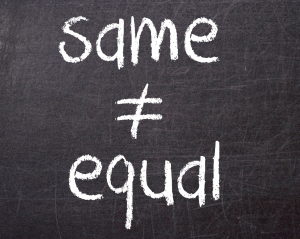 There was a cartoon a few years ago that said, “I would like to find some diverse candidates as long as they are diverse like me.” While we found the humor in it we also laughed because we knew, as with many jokes, there was a lot of truth in those sentiments.
There was a cartoon a few years ago that said, “I would like to find some diverse candidates as long as they are diverse like me.” While we found the humor in it we also laughed because we knew, as with many jokes, there was a lot of truth in those sentiments.
Last week I wrote about the “The Visibly Invisible”. The diversity iceberg (pictured below), that so many of us are familiar with, depicts diversity dimensions that we can see and others that we cannot see. I postulated that many people who identify with the “seeable” dimensions still often feel invisible.
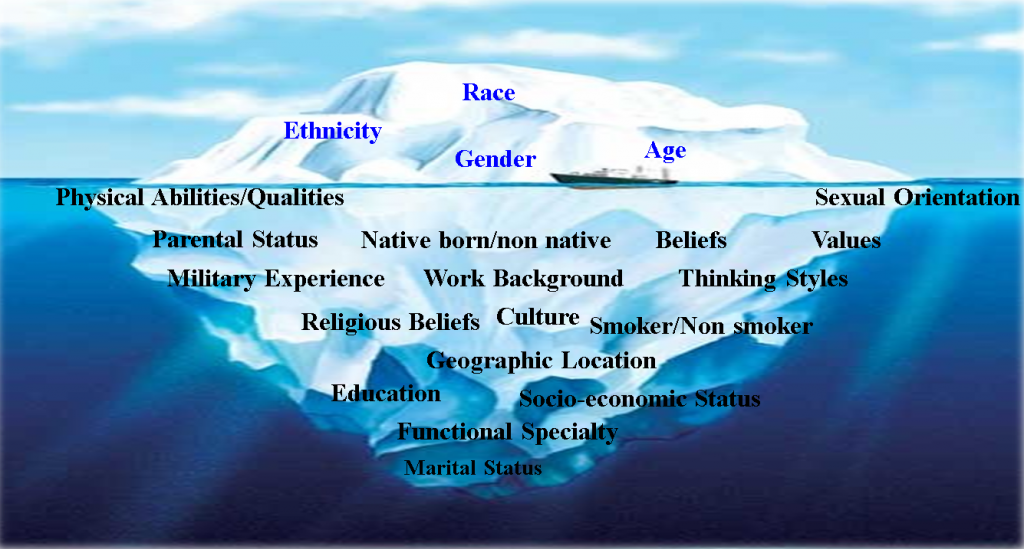
In my experience one way we develop in our worldview about diversity is to move from an “invisibility” lens to one that perceives everyone as the “same”. “I now see you and I only ‘see’ our similarities.”
We are comfortable with this notion that we are all the same, with the same opportunities, access and privileges. The belief that we are the “same” allows us to negate race or other visible aspects of diversity as credible reasons for different outcomes in education, upward mobility in organizations and socioeconomic status.
I am working with a K-12 school district this week conducting cultural competence training. We took a “Poll Everywhere” survey of the 26 participants…
The primary reason for inequitable outcomes for students of color can be attributed to poverty and not race.
Almost seventy five percent of participants agreed with the statement that poverty and not race was at the root of the problem. While I know that this is a complex issue and that poverty does contribute, the idea that race is not a primary factor is rooted in “sameness” mentality.
In this district as with many other public school districts around the country, not only are academic outcomes unequal but children of color are much more likely to be disciplined than are their white counterparts. Again, a worldview that we are the same, takes us to policies and practices that are established with this premise.
The word “same” means “identical”, not different, conforming in every detail. The word “equal” on the other hand, is defined as one being the same in status and quality, having the same access, etc.
We will continue to stay “stuck” in our progress towards an equitable and inclusive world if we continue under the paradigm that we are the “same” rather than recognizing that there are visible, concrete, systemic differences that make a difference in societal outcomes. We will not develop mutually adaptable solutions from a framework of “sameness”.
Think about how a worldview of sameness influences our hiring and promotion decisions. It is much like the cartoon I referred to at the beginning of this piece. We continue to hire and promote those who are “diverse like me”.


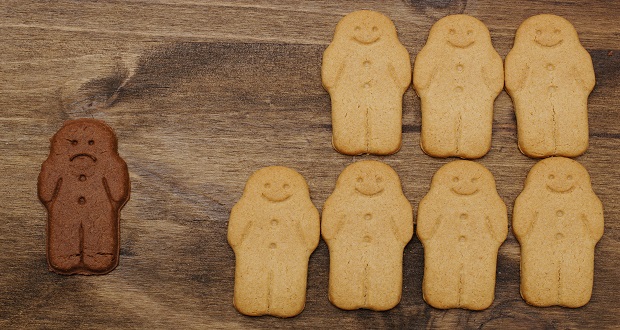
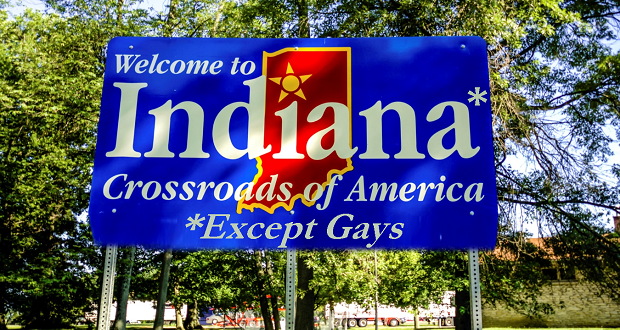
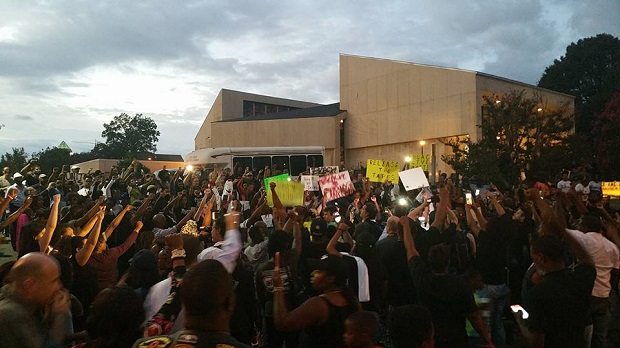














This article deals quite well with the fine points around the concepts of “same” and “equal”. The misconceptions around these terms leads us to fall short in the quest for equity, true fairness, equality of outcomes, and elimination of inappropriate behaviors.
Great post. Wanted to add that both the words “same” and “equal” are relative and you must ask, “compared to whom?” This is particuarly important with “equal” – as it’s such an ingrained cultural value particularly in the U.S. to “treat everyone equally,” but equally how? To me, ideally it should mean finding that person that is treated by society with the highest degree of respect, fairness, opportunity, access etc. and treating everyone else that same way. But people don’t oftend define “equally” and thus it is constantly open to interpretation and misunderstanding.
Thanks Mary for sharing this critical component of diversity and inclusion. Most of the people operate with this believe that they are “diverse” as a person and practice “inclusion” with the thought. It is like fitting all under one hat. One’s own perceptions and assumptions lead to individual’s understanding of diversity itself which at times may be misleading due to lack of holistic understanding of the subject.